Gardening, like yoga and meditation, has been practiced for thousands of years because of its positive effects on the body, mind, and soul. According to current research, gardening has several health benefits, including alleviating stress and anxiety, preventing inactivity-related diseases, maintaining mental health and happiness, and improving sleep quality. Below we learn about medicinal plants growing season chart in India, germination guide, medicinal herbs planting calendar, and details about some of the best medicinal herbs in India.
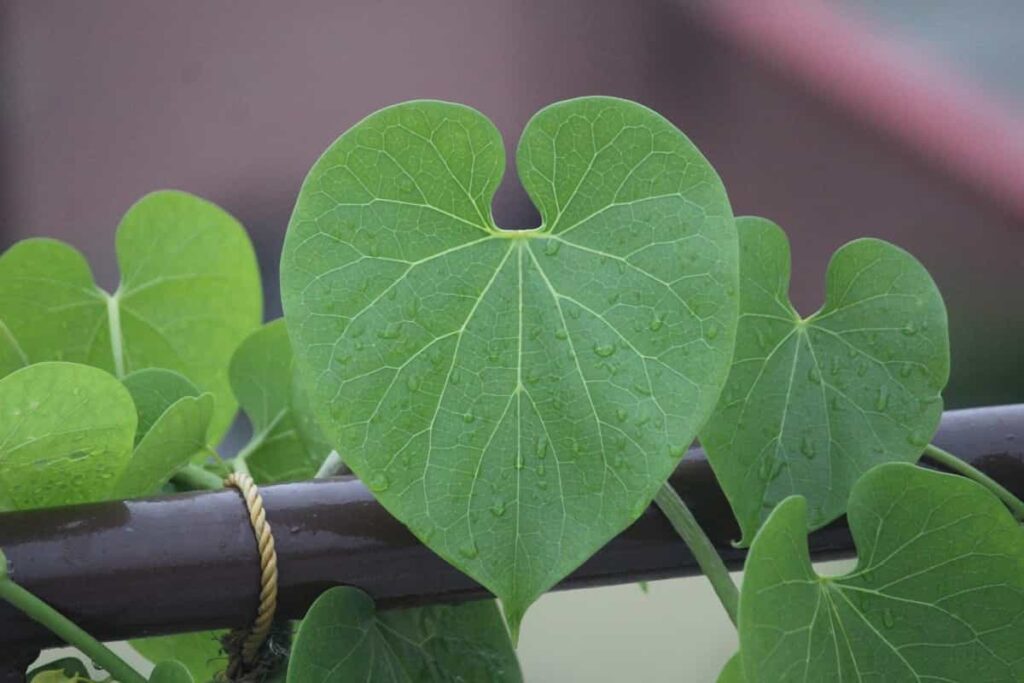
Medicinal plants growing season chart in India
What is the best way to grow aloe vera?
Many amateur gardeners have come to appreciate aloe’s resilience and ability to thrive with occasional watering. Aloe vera thrives in a terra cotta container with well-drained soil. The ideal option is to combine equal portions of potting soil and sand or to purchase a succulent mix. Aside from being more eco-friendly than plastic or glass, terra cotta has the added benefit of drying up much more quickly.
If your aloe plant begins to lean over from its weight, repot it immediately. This vegetation prefers a warm, humid environment. Make sure your aloe plant gets enough sunlight. It may stop growing and eventually die if you don’t water it. Once every two weeks, after the soil has dried up completely, give the plant a deep soaking.
Keeping the soil too wet will lead to the death of the roots since this plant is a desert species. Leaves that are limp or brown suggest that your plant has received an excess of water. You can bring your indoor plant outside in the summer, but it shouldn’t be exposed to direct sunlight immediately. Avoid overexposure by gradually moving it to a brighter location over many days.
In case you missed it: Organic Farming Of Medicinal Plants
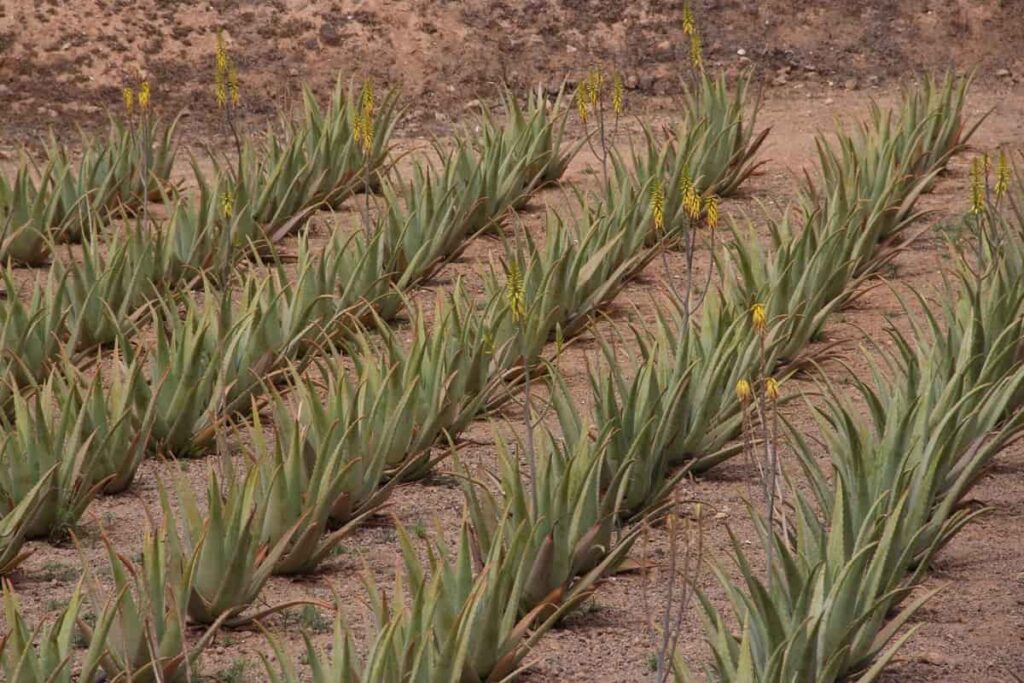
Can you grow aloe vera from a cutting?
The healing powers of aloe vera have made it a popular houseplant. For external wounds like burns, nothing beats the advantages of leaf sap. These houseplants are great because of their glossy, full leaves and the little maintenance they need. The easiest way to get new plants from an aloe plant is to use “pups,” or small cuttings.
Although it seems to sense that an aloe vera leaf will root, all you’ll end up with is a withered or rotting leaf. Because of this, propagating aloe vera plants from cuttings is not the best option. Just cut off the offsets and give them away to propagate this lovely plant.
Do aloe plants need direct sunlight?
Many people who try to grow succulents don’t give their plants enough light. Aloe needs a least six hours of sunshine every day, so be sure to put it in a window. Your succulent will lose its appealing, compact shape if exposed to indirect light for too long. Due to the stem’s deterioration, it might tumble over at any moment.
The dwarf aloe known as aloe variegata (partridge aloe) thrives in indirect, bright sunshine. Consider using artificial lights, alone or in addition to natural light, if the light coming from your brightest window is not enough. Place a white fluorescent light 6 to 12 inches above the plant to get the best effects.
Can Ashwagandha be grown at home?
Ashwagandha is a potent plant that revitalizes you and is simple to cultivate in your garden. Dig two centimeters into some crimson soil before the rain arrives. Start something from here. Plant the herb’s saplings at a minimum of 10 centimeters apart. Using a little coating of soil, cover the seeds. If they sprout in a week, that’s encouraging. Ashwagandha, an age-old plant, can help decrease inflammation and regulate blood sugar when taken regularly.
In case you missed it: Growing Medicinal Plants Hydroponically – a Full Guide
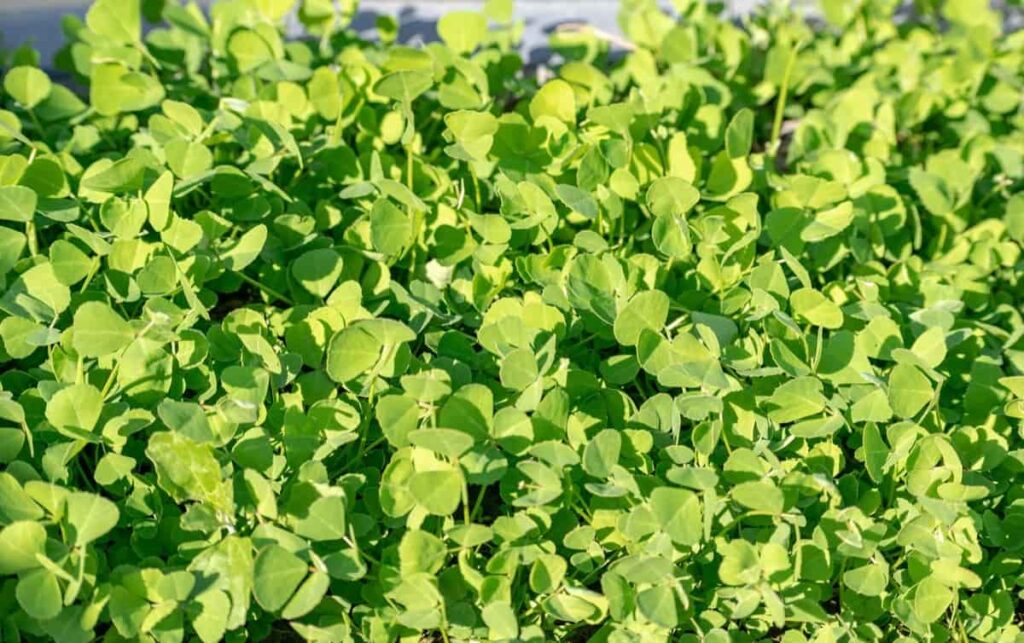
How long does the Ashwagandha plant take to grow?
The optimum time to harvest ashwagandha is between 160 and 180 days after planting. The whole plant must be dug out for the roots, and the stem must be severed from the rest of the plant about an inch or two above the crown. If you want to dry them faster, cut them into 8 to 10 centimeters long pieces.
Where does Ashwagandha grow best?
Ashwagandha requires little to moderate watering and thrives in full sun and dry circumstances. After the last frost, you may plant ashwagandha outside by simply burying the seeds about 3/8 inch below the soil’s surface and ensuring that they stay consistently wet until they sprout. Early spring sowing gives seedlings more time to flourish before transferring outside.
If planting seeds indoors in flats or other tiny pots, do so somewhat closer to the surface (1/4″). As seedlings appear, it is important to keep the soil wet. Gradually introduce them to outside circumstances by transplanting them into bigger pots. Once plants have stabilized at about 4 inches or more and the weather has warmed up in late spring, transplant them to a sunny spot.
How should I start my ashwagandha seed?
Plant your Ashwagandha indoors in the spring. Seeds will not germinate below 70 degrees Fahrenheit, and it may take up to 180 days for the plants to reach full maturity. Planting them inside early can provide you with a longer growing season. Plant some seeds in organic, nutrient-rich soil with which you’ve filled a seed-starting tray or many plastic pots. Plant the seeds in the containers, cover them with soil, and ensure they get enough water.
The ideal location for the seed containers is a windowsill in a warm, sunny room. In certain cases, the germination of ashwagandha seeds can take up to 14 days. Water the soil consistently until the seedlings appear. You can cut down on watering as soon as you see seedlings, but you should never allow the soil to dry out. When the Ashwagandha seedlings reach a height of four inches or more, they are ready to be planted in the garden soil.
In case you missed it: Medicinal Plants Contract Farming, and Advantages
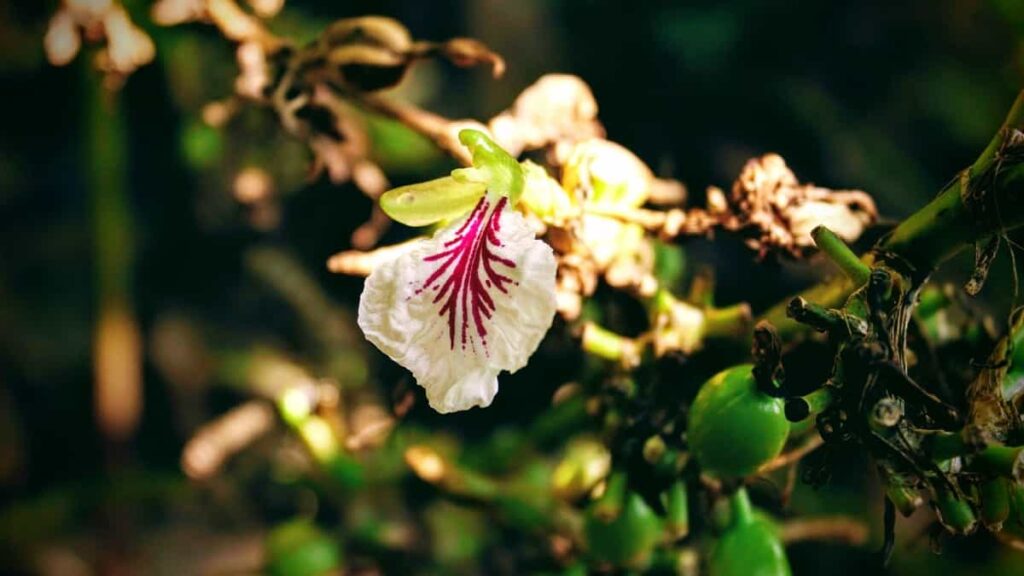
A mature Ashwagandha plant, at least 12 inches tall, is required for this propagation technique. Cut a portion of the stem about 4 inches long using sharp gardening shears. Take off the lower leaves and make the incision a quarter of an inch below the growing node. Fill it with water in a glass or container and drop it in the Ashwagandha cutting. The node should be submerged, but the leaves should remain above water.
In addition, a rooting hormone may be used to hasten the propagation process. Humidity may be maintained by placing the glass in a warm, sunny room and covering it with a clear plastic sheet. Every five to seven days, you should replace the water in the glass. It can take the cutting several weeks to establish roots. You can put your young Ashwagandha plant outside after its roots are at least 2 inches long.
When should I start my ashwagandha seed?
Seeds can be used to grow new Ashwagandha plants. Growing conditions in India are hot and humid (about 75–85 degrees Fahrenheit), with limited rainfall shortly after the pre-monsoon at the start of the rainy season (25 – 30 C). Once established, this plant can survive in dry soil conditions. A planting depth of 2 centimeters and a spacing of 10 centimeters are ideal for ashwagandha (20 C).
After two weeks, the seeds will begin to sprout. It is important to give the young plants enough water as they grow. After the first month, thin out the underperforming plants, leaving a spacing of around 50 to 60 centimeters. If you want to grow ashwagandha, you should do it in your yard in a sunny and dry spot. If the soil lacks nutrients, amend it with manure and clear the area of unwanted plants and debris before planting.
When should I harvest Ashwagandha?
Due to its sluggish development rate, ashwagandha can take up to six months to fully mature. You can easily pick this plant by hand from your garden. Give the soil a thorough soaking, grasp the plant around its base, and pull it out. A trowel may loosen the soil, although care must be taken to avoid damaging the plant’s roots.
After you’ve dug up your Ashwagandha, you should cut it in half down the middle with a sharp knife and then wash off the grime. Remove the root ball, then divide each root into 2 to 3 inches long pieces. The roots should be spread out in a single layer on a drying rack. To ensure that the roots dry out fully, the rack should be stored in a dry, shady, well-ventilated area.
How can I make Tulsi grow faster?
Sunlight is a vital component of photosynthesis, the process by which plants get the nutrients they need to flourish; therefore, growing a Tulsi plant in a sunny location is essential for achieving optimal growth. You can grow it indoors as well. Growing Tulsi well, however, will need lights instead of natural sunshine. The basil plant, sometimes called Tulsi or holy basil, requires soil with good drainage.
Tulsi plant thrives on sandy loam but can be grown in soil with good drainage. There shouldn’t be much clay in the soil since it might lead to waterlogging and stunted growth, which kills the plant or reduces its leaf output. This plant thrives on a soil pH between 6 and 7.5. The Tuli plant may produce more leaves if the soil is allowed to dry out between waterings. Overwatering encourages fungal growth on a plant’s roots, killing it.
In case you missed it: Medicinal Plants Cultivation, Farming Guide, Training
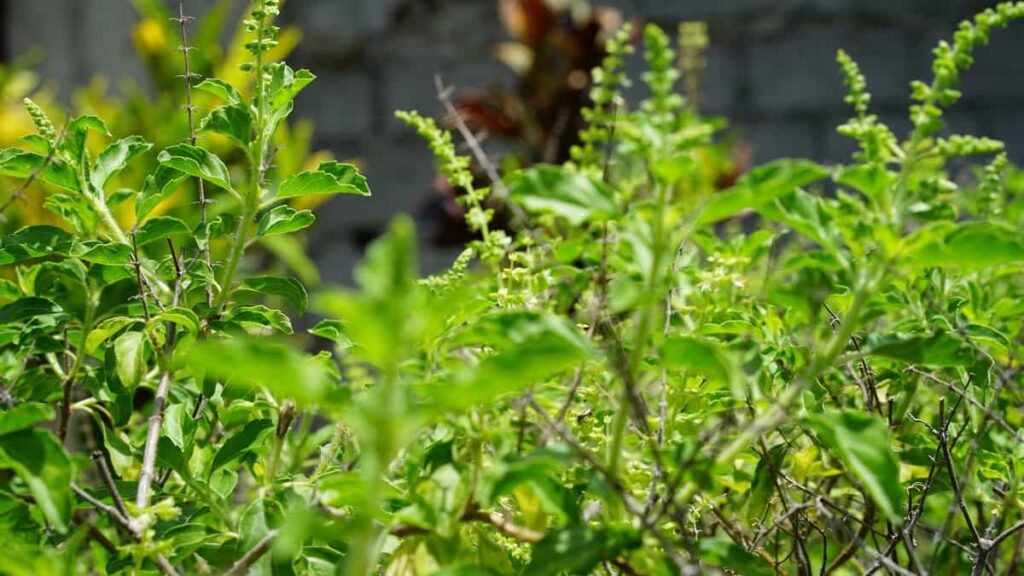
Where does Tulsi grow best?
Never forget that tulsi and basil are not suited for outdoor planting. For the greatest results, always plant it in a container. Tulsi plants thrive when planted towards the east or north. It’s best to plant it in a spot that has been recently cleaned up. The plant is said to eliminate diseases and negative energy, boosting good vibes and calming your mind.
How long does it take for Tulsi to grow?
Once the plant reaches approximately a foot, you may begin harvesting Tulsi. To improve harvests, pinching back the plant’s growth tips is recommended. Tulsi plants may be harvested 40 days after sprouting and thrive with infrequent but regular pickings. Careful harvesting of individual leaves or branches from a Tulsi plant allows it to keep producing for years. While Tulsi plants in India’s scorching summer can grow as tall as 5 feet, those grown inside or in cooler regions rarely exceed 2 feet.
How often should I water Tulsi?
Water the tulsi plant every day throughout the summer and every other day during the winter. It’s best to give the plant a little rain rather than a full soaking. If you want a bushy Tulsi plant instead of a single stem, pinch off the growing tip. If you want your Tulsi plant to stay green, leafy, and bushy, you’ll need to continue cutting back the new blooming heads and not let it blossom too soon.
Never allow the soil in the container to get too hard by not aerating it regularly. Common pests such as mealy bugs, aphids, spider mites, and even whiteflies may attack if inadequate growing circumstances exist. Use an organic insecticide or insecticidal soap containing Neem to eliminate pests.
Is sage easy to grow?
Sage is a low-maintenance plant that thrives with little attention. One of the few herbs whose taste remains strong after blooming, it has a long growing season. Extremely few pests can harm it, and the most common problem is mildew, which can be prevented by ensuring it is never left sitting in standing water. In the early spring, cut your sage back to the ground.
To preserve the taste of the leaves for the next season, you must remove the woody, thick stems. It would help if you only misted Sage sparingly. Mildew can form if there is too much water. Let the soil dry up entirely before you water it deeply. As required, sage can be gathered for use. The ideal place to make your cuts is just above where two leaves join. Morning is the best time to gather sage after the dew has evaporated.
In case you missed it: Low-Maintenance Indoor Vertical Garden Ideas, Tips, Techniques, and Secrets
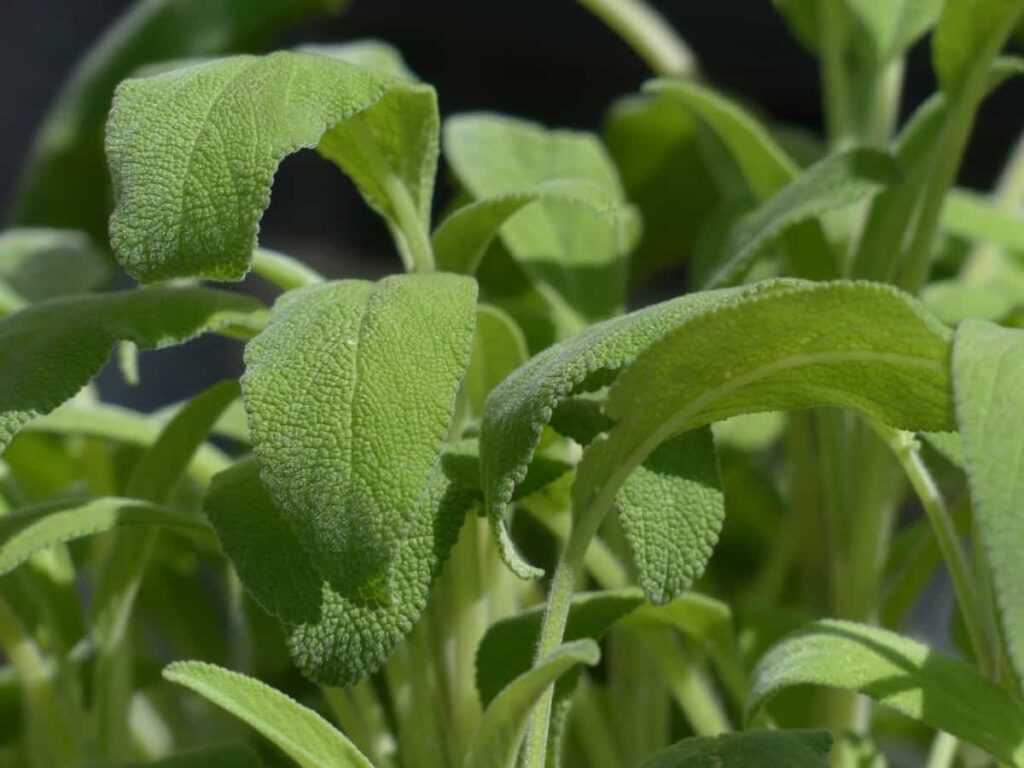
Should sage be in sun or shade?
Sage prefers well-drained, sunny locations. If it’s planted in damp soil, it will decay. Plant spacing should be anywhere from 12 to 24 inches apart, depending on your cultivating plant. (For further information, refer to the plant’s tag.)
Does sage regrow after cutting?
Sage should be pruned in the early spring. If you prune it now, the plant may struggle through the winter without its leaves. During February, trim the shoots to a height of around 5 cm. After a good trimming, the sage will send new shoots and fill out when favorable conditions are favorable. However, if new branches have appeared on your sage by the time you want to prune it, you should wait. After the sage has produced new leaves and stems, the leaves can be harvested and used in various ways, including making sage tea or seasoning food.
Multiplication by cuttings is ideal if you want to expand your supply of fragrant sage in the landscape. It’s a breeze to do. The months of July through late summer are ideal for sage reproduction. No flowers should form on the plant. If not, cut down on the blossoms and remove the buds. Start by snipping a young sprout about 6 cm below the top of the leaf using a sharp knife. Then, remove the lowest set of leaves until only three sets remain on the cutting. Carefully insert the slice into the compost soil, and then water it.
Keep the soil consistently damp. Since the cutting will flourish in a humid environment, a plastic bottle split in half can be used as a greenhouse by being gently placed on top of the pot containing the cutting. If the bottle starts to steam up, remove the cap. After the cutting has developed roots and is strong enough, it can be transplanted from its container to the garden. A cutting of sage, freshly removed from the plant, can also be placed in a glass of water. After around two weeks, the cutting will have established enough roots to be placed in the ground.
Medicinal plants growing season chart/guide/calendar in India
| Medicinal herbs | Sowing time | Germination time |
| Aloe vera | June to July Sep to Oct | 2 to 4 weeks |
| Basil/ Tulsi | Oct to Jan | 8 to 12 days |
| Coriander | Mid-Oct to mid-Nov | 2 to 3 weeks |
| Spearmint | March to May | 7 to 15 days |
| Lemongrass | March to April | Around 3 weeks |
| Cardamom | June | 20 to 40 days |
| Giloy | June to July | 7 to 10 days |
| Curry leaves | July to Aug | 10 to 15 days |
| Ashwagandha | June to July | 6 to 7 days |
| Sage | Feb to Mar | 10 to 21 days |
| Fenugreek | Oct to Nov June to July | 3 to 5 days |
| Khus | June to July | 3 to 5 days |
| Lavender | Aug to Sep | 15 to 30 days |
| Peppermint | Mid Feb to late mar | 7 to 15 days |
| Henna | Mar to April | Around 12 days |
Conclusion
Despite the inevitable frustrations, realize that gardening is not a sport for most green thumbs. Have fun getting to know your plants and developing your ability to “read” them to determine their requirements.
- Types of Pesticides Used in Agriculture: A Beginner’s Guide
- Economical Aquaculture: A Guide to Low-Budget Fish Farming
- 15 Common Planting Errors That Can Doom Your Fruit Trees
- How to Make Houseplants Bushy: Effective Tips and Ideas
- Innovative Strategies for Boosting Coconut Pollination and Yield
- Pollination Strategies for Maximum Pumpkin Yield
- The Complete Guide to Chicken Fattening: Strategies for Maximum Growth
- Natural Solutions for Tulip Problems: 100% Effective Remedies for Leaf and Bulb-Related Issues
- Revolutionizing Citrus Preservation: Towards a Healthier, Greener Future
- Natural Solutions for Peony Leaf and Flower Problems: 100% Effective Remedies
- Maximizing Profits with Avocado Contract Farming in India: A Comprehensive Guide
- Natural Solutions for Hydrangea Problems: 100% Effective Remedies for Leaf and Flowers
- The Ultimate Guide to Choosing the Perfect Foliage Friend: Bringing Life Indoors
- From Sunlight to Sustainability: 15 Ways to Use Solar Technology in Agriculture
- The Ultimate Guide to Dong Tao Chicken: Exploring from History to Raising
- The Eco-Friendly Makeover: How to Convert Your Unused Swimming Pool into a Fish Pond
- Mastering the Art of Delaware Chicken Farming: Essentials for Healthy Backyard Flocks
- 20 Best Homemade Fertilizers for Money Plant: DIY Recipes and Application Methods
- How to Craft a Comprehensive Free-Range Chicken Farming Business Plan
- Brighten Your Flock: Raising Easter Egger Chickens for Beauty and Bounty
- How to Optimize Your Poultry Egg Farm Business Plan with These Strategies
- Subsidy for Spirulina Cultivation: How Indian Government Schemes Encouraging Spirulina Farmers
- Ultimate Guide to Raising Dominique Chickens: Breeding, Feeding, Egg-Production, and Care
- Mastering the Art of Raising Jersey Giant Chickens: Care, Feeding, and More
- Ultimate Guide to Raising Legbar Chickens: Breeding, Farming Practices, Diet, Egg-Production
- How to Raise Welsummer Chickens: A Comprehensive Guide for Beginners
- How to Protect Indoor Plants in Winter: A Comprehensive Guide
- Ultimate Guide to Grow Bag Gardening: Tips, Tricks, and Planting Ideas for Urban Gardeners
- Guide to Lotus Cultivation: How to Propagate, Plant, Grow, Care, Cost, and Profit
- Agriculture Drone Subsidy Scheme: Government Kisan Subsidy, License, and How to Apply Online
- Ultimate Guide to Raising Araucana Chickens: Breed Profile, Farming Economics, Diet, and Care
- Bringing Hydroponics to Classroom: Importance, Benefits of Learning for School Students
- Ultimate Guide to Raising Polish Chickens: Breed Profile, Farming Economics, Diet, and Care
- Ultimate Guide to Raising Australorp Chickens: Profile, Farming Economics, Egg Production, Diet, and Care
- Silkie Chicken Farming: Raising Practices, Varieties, Egg Production, Diet, and Care
- Sussex Chicken Farming: Raising Practices, Varieties, Egg Production, Diet and Care